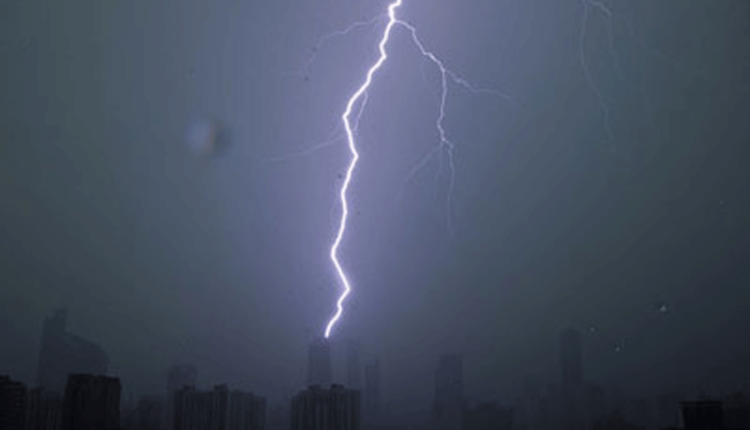Pakistanis seek explanation for ‘lightning and noise’ after earthquake

Islamabad: Thousands of Pakistanis said they heard a ‘mysterious’ noise and saw lightning in the sky when an earthquake struck on Tuesday, March 21, 2023.
At least 19 people were killed and more than 200 injured after a powerful earthquake shook large parts of Pakistan and Afghanistan. The 6.5-magnitude quake damaged buildings, triggered landslides and sent people running into the streets.
Prominent among those who asked about the noise and lightning on social media was Khyber Paktunkhwa’s famous cleric Mufti Shahabuddin Popalzai.


Most of the people who saw the lightning said there were no clouds in the sky when the earthquake hit.
For those asking for the reasons, scientists have different theories about what happens under and above the surface during the earthquake.
Earthquake lightning is a rare and fascinating phenomenon that occurs during specific earthquakes, where light flashes are seen in the sky before, during, or after an earthquake. These flashes can appear as lightning bolts or glowing balls of light, often accompanied by a rumbling sound.
The exact cause of earthquake lightning is not fully understood, and several theories attempt to explain it. One of the leading theories is that the movement of tectonic plates during an earthquake generates electrical charges that can ionize the air, creating a plasma that emits light. When tectonic plates move and grind against each other during an earthquake, they generate a variety of mechanical stresses that can produce electrical charges. One of the primary mechanisms for generating electrical charges during an earthquake is piezoelectricity.
Piezoelectricity is a phenomenon where certain materials, such as quartz, tourmaline, and topaz, can generate electrical charges when subjected to mechanical stress. These materials have an asymmetric crystal lattice structure, which means that it has a positive and negative charge distribution that is not centered at the same point. During an earthquake, the rocks in the Earth’s crust experience tremendous mechanical stress as the tectonic plates move and grind against each other. This mechanical stress can cause the rocks to deform and generate electrical charges through piezoelectricity. The charges generated by piezoelectricity are typically very small and localized, but they can accumulate and create enormous electrical potentials in areas where the stresses are concentrated. This can lead to the formation of electrical discharges or ionization of the air, which can result in earthquake lightning.
Another theory suggests that the flashes of light seen during an earthquake may result from electrical discharges in the Earth’s atmosphere caused by the movement of rocks during the earthquake. This theory is based on the fact that rocks can generate electric fields when they move relative to each other, a phenomenon called the triboelectric effect. The triboelectric effect occurs when two materials with different electron affinities come into contact and are separated. When this happens, electrons can transfer from one material to another, creating a charge separation between the two materials. In the case of rocks, the triboelectric effect can occur when two rock surfaces slide or rub against each other during an earthquake. This can cause the transfer of electrons between the surfaces, resulting in a separation of charge and the generation of an electric field. The electric fields generated by the triboelectric effect are typically very small and localized, but they can accumulate and create large electric potentials in areas where the stresses are concentrated. If the electric potential becomes strong enough, it can ionize the air and create electrical discharges, such as lightning. The reason that these electric fields can create electrical discharges in the atmosphere, even though the rocks themselves are buried deeply in the Earth, is that the electric fields can propagate through the surrounding medium. The rocks act as a source of the electric fields, and the fields can then travel through the surrounding rocks and air to create electrical discharges in the atmosphere.
Even though earthquake lightning has been observed for centuries, the scientific community has yet to reach a consensus on its cause. While there is evidence to support the theory that the ionization of the air causes earthquake lightning by electrical charges generated by tectonic activity, more research is needed to understand the phenomenon comprehensively.
